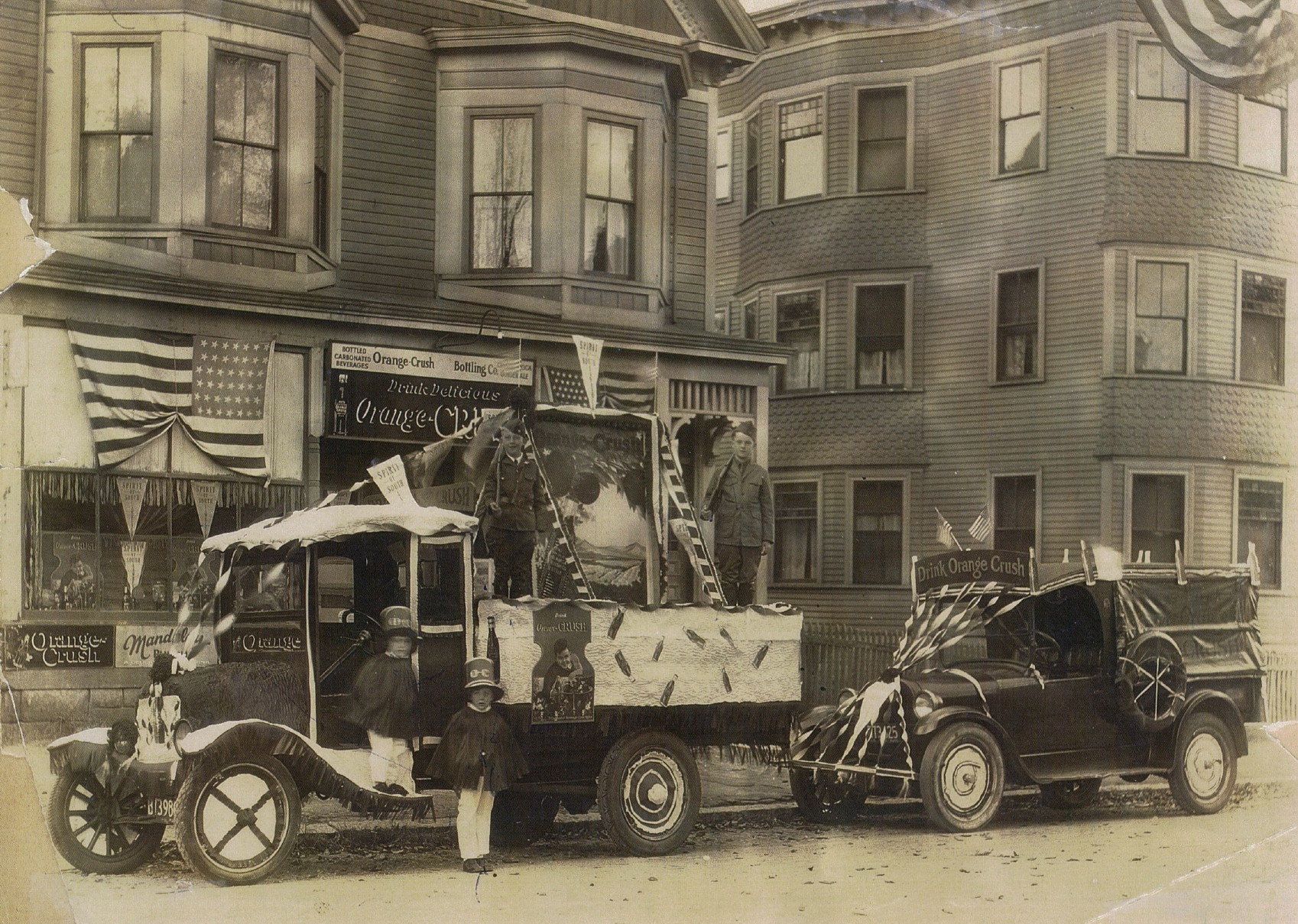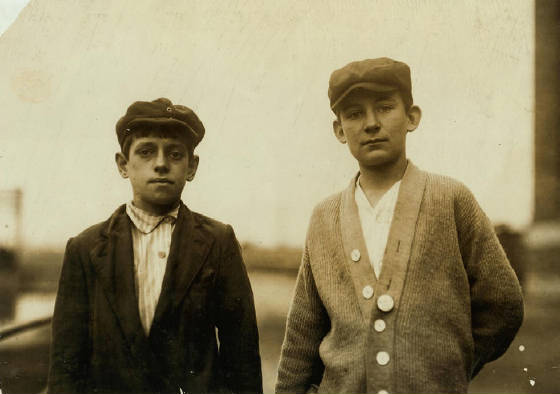
Lewis Hine caption: Smallest boy is Thomas Losesque, 82 Margin Street. Other is Wilfred Valliere, 79 Margin Street, probably 14. Both work in mill room at Wood Mill. Location: Lawrence, Massachusetts, September 1911.
“He did his best to raise a family of five boys. As millions of others did, he worked hard and long in tough times.” -Wilfred Valliere, son of Wilfred Valliere Jr.”
When 9-year old Wilfred J. Valliere moved with his parents and seven siblings from New Hampshire to Lawrence in 1905, he was about to witness the creation of what some called the “eighth wonder of the world.” Along the Merrimack River, William Wood built the Wood Mill, at that time the largest mill in the world. Covering almost 30 acres, it was nearly a third of a mile long. It opened in 1906.
By 1911, as Lewis Hine documented, 15-year-old Wilfred was among thousands of workers, mostly women and children, on the front lines of the textile industry. History tells us that he probably had already been toiling there for three or four years, subjected, for 10 or 12 hours a day, to the deafening noise of machines and the lint-filled air that passed through his lungs. Four months after he posed for this picture, he was caught up in the Bread & Roses Strike. It seldom occurs to most Americans who grew up in the last half of the 20th century that for Wilfred, his tumultuous life was pretty routine for most immigrant families 100 years ago. (My story of the other boy, Thomas Levesque, is also on this site.
In 1892, Wilfred’s parents, Quebec natives Alfred Valliere and Georgiana Leclerc, married in Somersworth, New Hampshire. He was 23 and she was 18. Alfred was a loom fixer, most likely at the Great Falls Manufacturing Company, a large complex of mills along the Salmon Falls River. Wilfred was born in Somersworth on July 8, 1896, one of at least 12 children. The family moved to Lawrence in 1905, and Alfred continued to work as a loom fixer. They lived in a rented three-decker house at 79 Margin Street. His mother died in childbirth in 1915. The child, Clarence, survived, and died on January 6, 2012, at the age of 96.
Wilfred married Bertha Beauchesne in 1916. They lived at 170 Salem Street in Lawrence, a multi-family house that was built in 1888, according to city records. Wilfred worked at the Witherell & Dobbins shoe factory in Haverhill. By 1920, they had moved to 172 Bailey Street, where Lionel, the first of five children, was born. Shortly after, they moved to 114 Farnham Street, where Wilfred ran a soda bottling business and small grocery store.
That’s where son, Wilfred Jr., was born. I located him after I obtained his father’s obituary. His father, then a resident of Salem, New Hampshire, passed away on April 21, 1978. He was 81 years old. When he stared at Lewis Hine’s camera, he never would have dreamed that, 100 years later, the Wood Mill would become the home of over 200 riverfront apartments called Monarch Lofts.

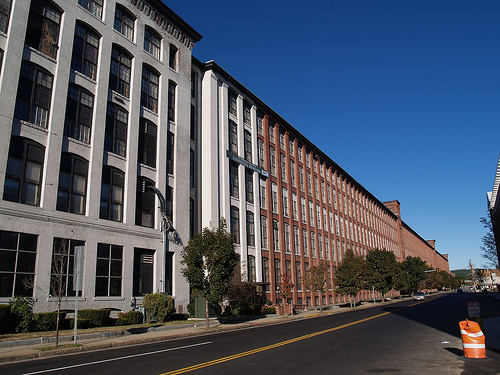
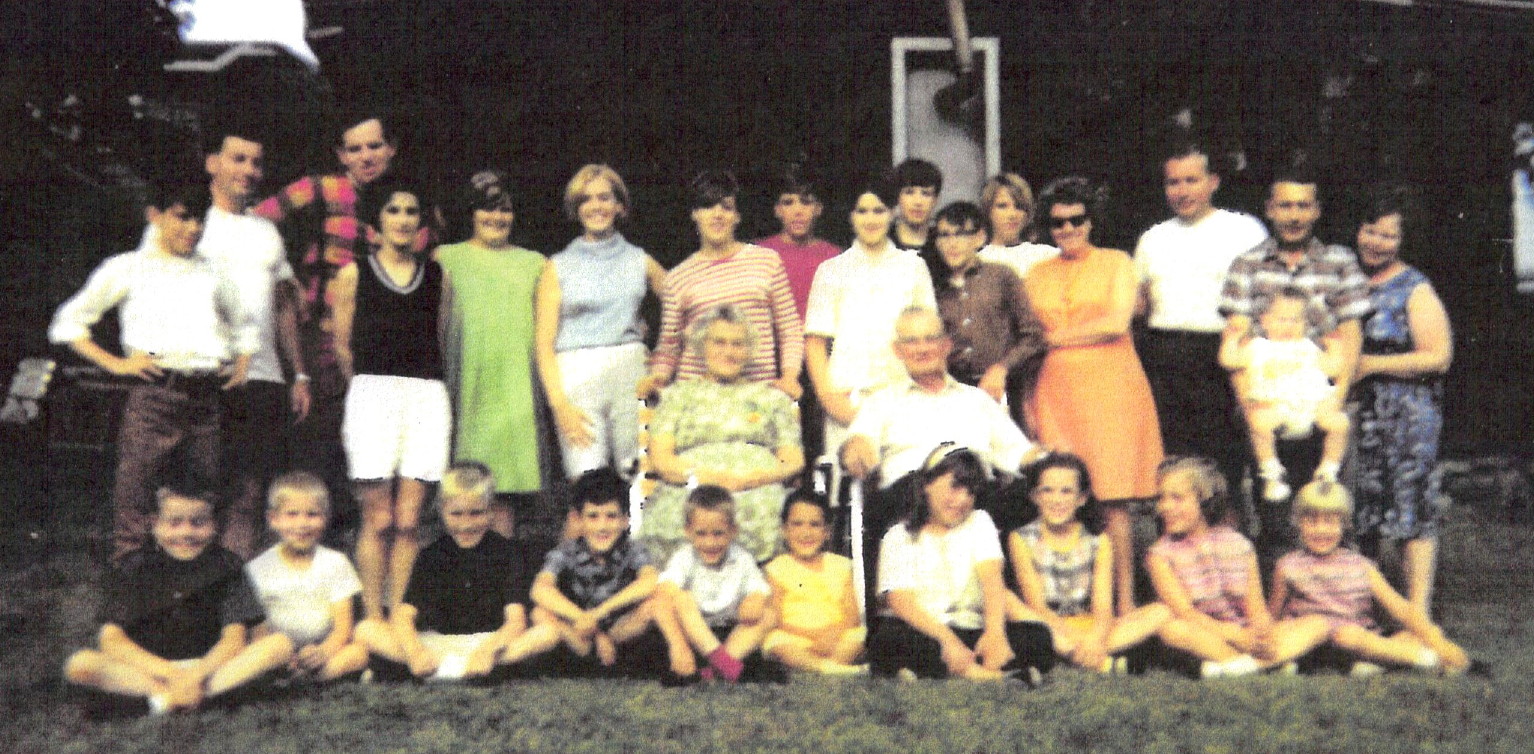
Excerpts from my interview with Wilfred Valliere Jr., son of Wilfred Valliere. Interview conducted on January 2, 2012.
“I was born on October 24, 1923. My parents were living at 114 Farnham Street, in South Lawrence. My mother’s name was Bertha Beauchesne. My father owned a bottling plant in Lawrence. It bottled Orange Crush. I’ve got a bottle of it in my refrigerator right now, though the current vintage is not as good. Before that, he worked in the shoe mills in Lawrence. When I was about six or seven years old, my father placed an advertisement for the bottling plant in the Lawrence business book, and he put my picture in the ad.”
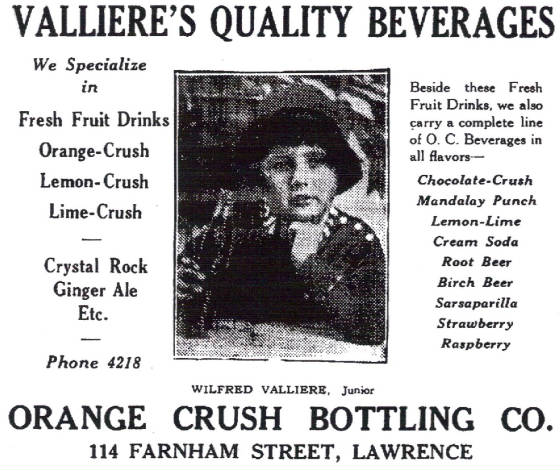
“The bottling plant was on the ground floor of a three-decker house. It was in the back, and we had a small grocery store in the front. We lived on the second floor, and then we had a third floor that we called the attic. My grandfather lived with us for a while. He was a great baker. He made all the bread for the family, and he also worked in the bottling plant. My mother ran the store. About 1930, the landlord wanted the property, so we had to move. So my father couldn’t keep his bottling business. We moved to Methuen and bought a house at 31 Perley Street. He went back to work for a shoe mill, and then wound up being a distributor for several bottling companies and for the Wise Potato Chip company.”
“I didn’t know that my father worked in the mills when he was young, until I saw the photograph. I wish I had known that way back, so I could have talked to him about it, and about the Bread & Roses Strike. His mother died in childbirth when he was still young (1915). I don’t think that he graduated from high school, but he was a very smart man. He took some courses in night school. He and my mother did the books for the company, so he was good with numbers.”
“I went as far as my junior year. When I was 16, I got a job in a clothing store in Lawrence. I worked for various businesses. In 1963, I started a wholesale hosiery business and did that for thirty years. I lived most of my adult life in Springfield, Mass.”
“My father was a good, hard-working guy. He did his best to raise a family of five boys. As millions of others have done, he worked hard and long in tough times. We weren’t as close as I would have liked. He was busy with his work most of the time. That generation was somewhat reserved. Today’s generation is better. It’s very common now for families to say, “I love you.’ We didn’t do that then.”
“In their later years, my parents sold the house at 31 Perley Street to a family member and bought a small mobile home in Salem, New Hampshire. My father died of congestive heart failure. In my view, he was a great man.”
Below is a picture of the Valliere home at 114 Farnham Street, where the grocery store and the Orange Crush Bottling Company were located. The date of the picture in not clear, although it was probably in the late 1920s. Mr. Valliere stated that the boy in the truck on the left, and the two small boys in front, were his brothers, although he wasn’t sure of each one’s identity. On the back of the picture was written, “Bread & Roses parade.”
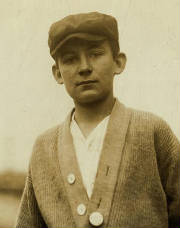
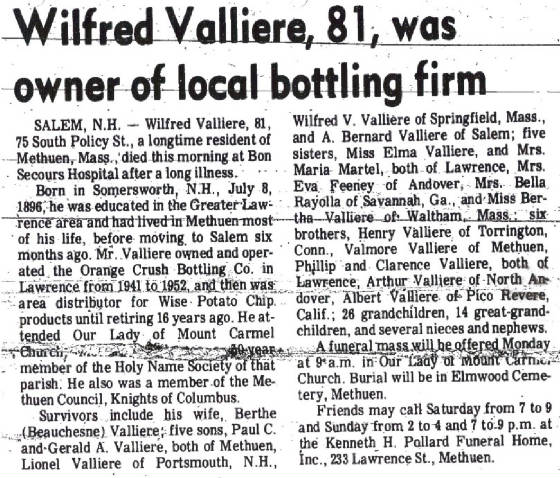
Wilfred Valliere and Thomas Levesque, the two boys in the Hine photograph, lived across the street from one another, and were probably friends. They had a curious thing in common. Thomas’s father ran a soda beverage bottling company. When Wilfred grew up, he also had a soda beverage bottling company. It’s likely that they would have competed for customers.
*Story published in 2012.
